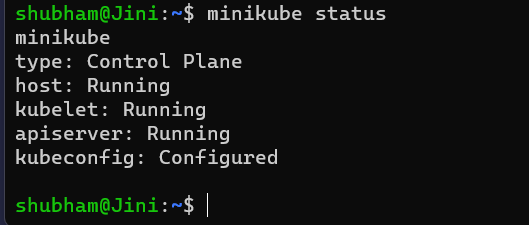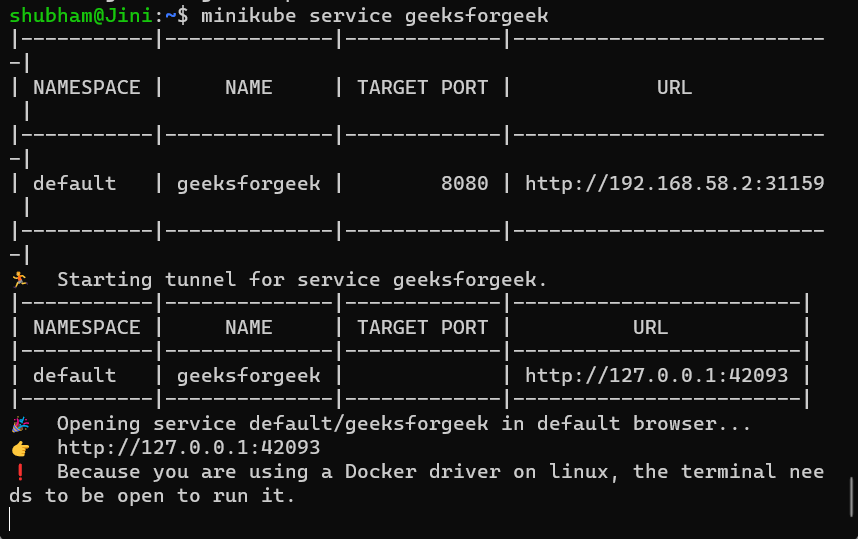Minikube is a one-node Kubernetes cluster where master processes and work processes both run on one node. According to the official documentation of Minikube, Minikube is local Kubernetes, focusing on making it easy to learn and develop for Kubernetes. A prerequisite to use Minikube is a Docker container or a Virtual Machine environment. Minikube provides you a way to easily deploy application on Kubernetes for learning and developing purposes even if you don’t have enough resources like memory, CPU etc.
How to Install Minikube(Windows)?
Follow these steps to download Minikube via CLI, you can also check out Minikube’s official website to download the .exe version.
Step 1. Enter the following command in your Windows PowerShell. Make sure to use PowerShell as an administrator.
New-Item -Path 'c:\' -Name 'minikube' -ItemType Directory -Force
Invoke-WebRequest -OutFile 'c:\minikube\minikube.exe' -Uri 'https://github.com/kubernetes/minikube/
releases/latest/download/minikube-windows-amd64.exe' -UseBasicParsing
Step 2. Now enter the following command to add the minikube.exe binary to your PATH:
$oldPath = [Environment]::GetEnvironmentVariable('Path', [EnvironmentVariableTarget]::Machine)
if ($oldPath.Split(';') -inotcontains 'C:\minikube'){
[Environment]::SetEnvironmentVariable('Path', $('{0};C:\minikube' -f $oldPath), [EnvironmentVariableTarget]::Machine)
}
Step 3. Restart your terminal and enter ‘minikube’ command to check if Minikube is installed.
minikube
This will give you a similar output if Minikube is installed. If you face any other issues, checkout the official website of Minikube for resolving it.

What Does Minikube Do?
Minikube is a one node Kubernetes cluster that runs in VirtualBox on your local machine in order to test Kubernetes on your local set up. In order to setup a production cluster, we need multiple master notes and multiple worker nodes. Master nodes and worker nodes have their own separate responsibilities. In order to test something on our local environment for example – deploying a new application or a new component and to test it on our local machine, it will be very difficult and would consume a lot of resources like CPU, memory etc.
Minikube comes into play here. Minikube is an open-source tool that is basically like a one node cluster where the master processes and the work processes both run on one node. This node must have a Docker container runtime pre-installed to run the containers or pods with containers on this node.
Deploying a Service Using Minikube and Kubectl
Kubectl is the Kubernetes CLI tool. To know more about Kubectl, read the following article on GeeksforGeeks – Kubernetes – Kubectl. Follow these steps to deploy a service using Minikube and Kubectl:
Step 1. Enter the following command to start the Kubernetes cluster:
minikube start
If you are logged in as a root user you might get an error message:
Exiting due to DRV_AS_ROOT: The "docker" driver should not be used with root privileges.
This is because the default driver in the Docker driver and it should not be used with root privileges. For fixing this we should log in as a different user that the root user.

Enter the following command to add a new user
adduser [USERNAME]
Now enter the following command to login as a new user
su - [USERNAME]
Now upon entering the same minikube start command
minikube start
you will get a similar output, wait for some time until the installation of dependencies gets completed:

Step 2. Now if we check the number of nodes running, we will get the minikube node running.
kubectl get nodes
this will give you the following output:

or you can also check the status by running the following command:
minikube status
you will get a similar output on the terminal:

Step 2. To find out the services that are currently running on Kubernetes enter the following command:
kubectl get services
you will only see the default Kubernetes service running.
Step 3. Enter the following command on your terminal to create a deployment
kubectl create deployment geeksforgeeks --image=kicbase/echo-server:1.0
Step 4. Enter the following command to expose the deployment to the port 6000:
kubectl expose deployment geeksforgeeks --type=NodePort --port=6000
Step 5. Now when you check out the list of services
kubectl get services
you will find the geeksforgeeks service:

Step 6. Now to run the service, enter the following minikube command:
minikube service geeksforgeeks
It will display the following result:

You have to just copy the address (http://127.0.0.1:42093/ for me) and paste it to your browser to see the application website. It looks like the following:

Some common Minikube command
1. Deleting The Minikube Cluster
You just have to simply enter the following command to delete the minikube cluster.
minikube delete

2. To Pause Kubernetes Without Impacting Deployed Applications.
minikube pause
3. To Unpause The Instance
minikube unpause
4. To Stop The Cluster
minikube stop
5. To Delete All Minikube Clusters
minikube delete --all
Conclusion
In this article we learned about Minikube and how to use it. It is a one node Kubernetes cluster where master processes and work processes both run on a single node. Minikube is a very useful to to deploy and test Kubernetes applications locally. We learned about how to install Minikube along with Kubectl in our local machine and we created a service and deployed it using Minikube. Deploying application through Minikube is very straight forward using minikube and kubectl commands. Later we discussed some common useful Minikube commands. We hope that this article taught you about what Minikube is, how it works and how to deploy an application using Minikube. Make sure to follow other articles on GeeksforGeeks to know about more tools in DevOps.
FAQs on Kubernetes Minikube
1. What are the prerequisites before learning Minikube
Before studying about Minikube. You should have knowledge of Docker and Kubernetes.
2. Is Minikube a virtual machine?
No, Minikube is just an open-source tool for running Kubernetes on a virtual machine.
3. What is Minikube used for?
Minikube is used to test Kubernetes on your local set up
4. Is Minikube same as Docker?
No, Minikube is an open-source tool used to run Kubernetes on a virtual machine. While Docker is used for running building and working on containers.
5. Is Minikube Open-source?
Yes, Minikube is an open-source tool under Kubernetes project.
Share your thoughts in the comments
Please Login to comment...